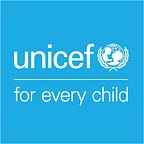Sajad, 15 — safe in Austria
In 2015, more than 1 million people crossed the Mediterranean to reach Europe. One in four of them was a child. Children on the move have specific vulnerabilities and protection needs, and their journeys — by sea or over land — pose significant risks for them and their families, as well as challenges for European countries where people are on the move and at final destinations.
Especially vulnerable children include those with disabilities and special needs, who find very little or no specialized services available throughout their journey. Sajad Al-Faraji, 15 (in wheelchair), and his family, from Iraq, are taking a refugee train from Preševo to Croatia.
Stress and fatigue are among the added risks that children face. Now in Austria, Sajad (left), sick and exhausted, has to spend the entire day at Kurier Haus, a processing centre for refugees in Vienna, the capital, where he and his family are applying for asylum.
Sajad’s sister, Houda Al-Malek (centre), begins the application process for the family. “My mother took the risk and decided to leave Iraq,” she says. “She told me she was ready to die in the sea, but the most important thing was that I take my brothers to the country I choose.”
The family, although safely at their final destination, must now go through the complex registration and documentation process. Sajad and Houda (behind him) wait during the long and slow process.
Sajad’s brother, Zein Alabdien, 13, is photographed as part of documentation procedures that refugees and migrants on the move undergo. Houda, behind him with Sajad and their mother, says: “Here there is security, but back in Iraq there is no security. Iraq is full of bad things.
Speaking about their journey, Houda says: “We faced enormous difficulty then, but when we crossed to this country things got a little bit better.” The registration and documentation completed, Zein, Sajad and their mother, Fatima Al-Hammoudi, begin exploring the capital.
At times the family had to buy four tickets to get on a train only to find there were no seats. Sajad had to sleep in the aisle, and the family had to put luggage on top of him. “Everything is beautiful here,” Sajad said, taking in the sights in Vienna.
He, his mother and his sister also enjoyed a visit to Vienna’s Cafe Central. “My mom keeps saying that people here received us with empathy and, here, individuals have their own protected rights,” Houda says. Sajad enjoys watching sports shows on TV. He would like to become an athlete.
Sajad, who became paralyzed at one month of age following a botched surgery that damaged his spine, faced mobility issues during his entire journey. At the entrance to a building in the capital, Sajad and Zein get help with Sajad’s wheelchair.
“Everything … everything is beautiful,” Sajad said, looking at paintings in the Picture Gallery during the family’s visit to Vienna’s Kunsthistorisches Museum (Museum of Art History). “All the pictures I saw … I liked them all.”
“I and my brother give Sajad the utmost support,” Houda said. “He will be somebody one day but this will be through education and learning. It’s very important to learn the language as a first step.” Zein admires the mirrored ceiling while riding with his family in a lift at the museum.
Sajad, viewing the Egyptian and Near Eastern collection, said: “The thing that surprised me most was the museum. It was very nice, full of beautiful things that represented the Egyptian and the Babylonian civilizations.”
The Al-Faraji family now lives in a temporary shelter at an abandoned hospital outside the capital. With refugee housing in the city filled to capacity, volunteers have had to find shelter for arriving refugees and migrants who have nowhere to stay.
People staying at this shelter receive three meals a day. Sajad says: “I have no dream whatsoever,” and Houda adds: “Certainly he will have a better life here … He is still not that open-minded, but I believe he has a better chance here.” Ms. Al-Hammoudi and Houda, in the dining space.
The shelter also has a recreation space, giving children a safe place to play. Sajad plays a game of table football with other children. “I’m thankful to God,” he says. “Now I feel comfortable as long as my family is well and comfortable.”
The family smiles in the communal sleeping space. “We owe it to my mom that we were able to reach this place.” Houda says. Concerted action is urgently needed to give all children on the move — with or without a disability — a fair chance at life.
For every child, a fair chance. For every child, an #ActOfHumanity.
Learn more about the refugee and migrant crisis.
